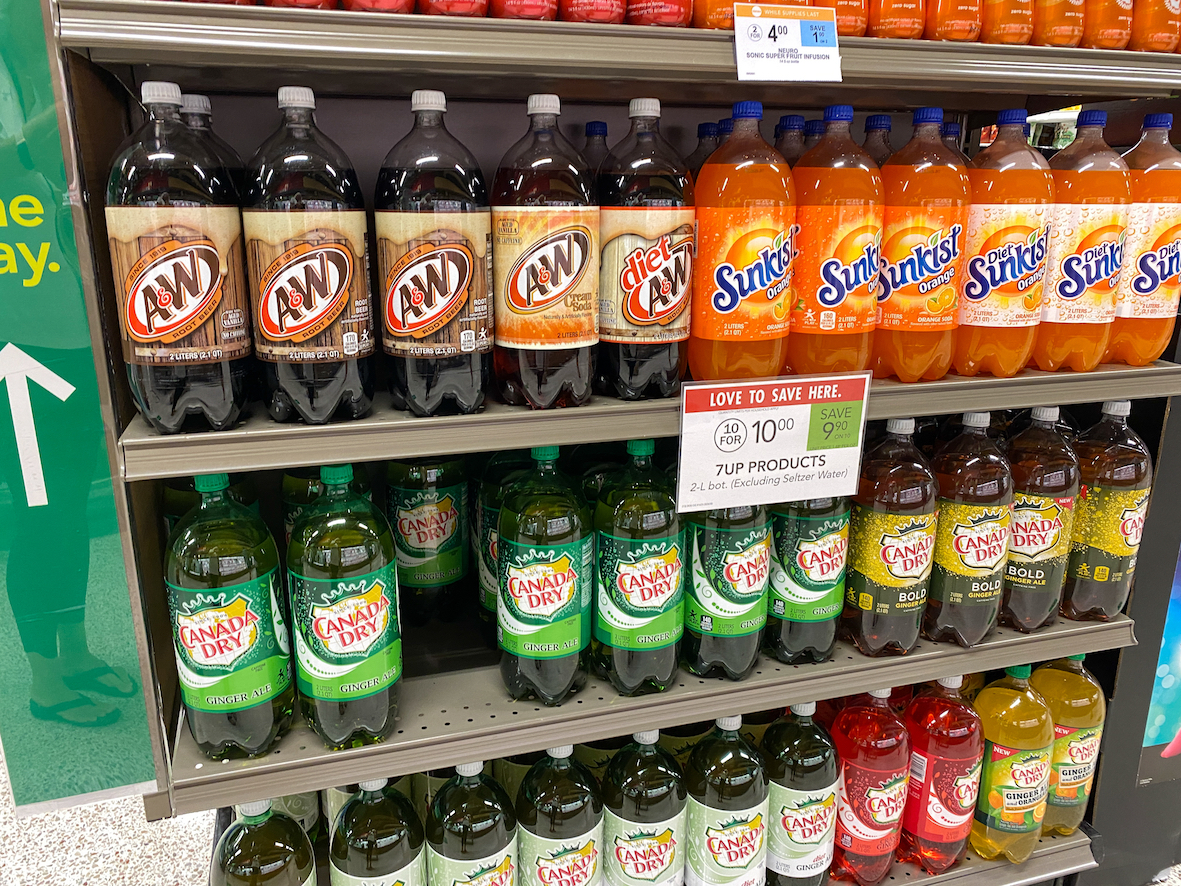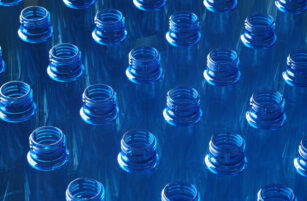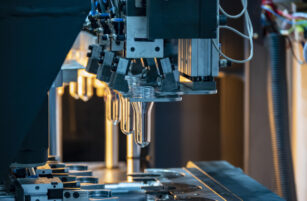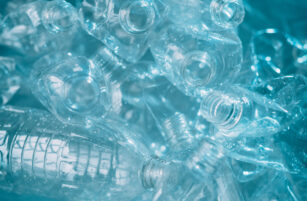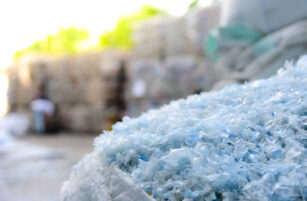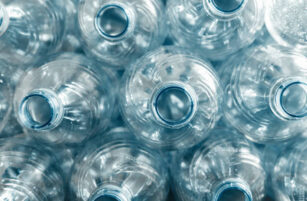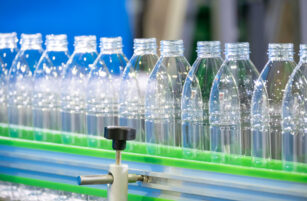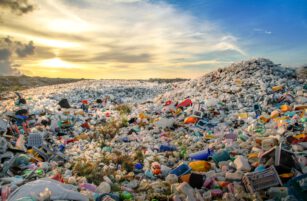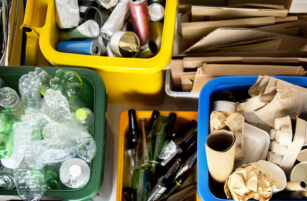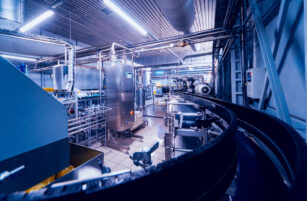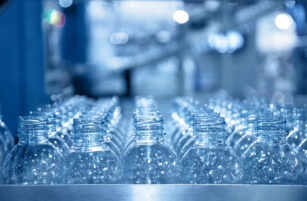- This week, we look at the five main plastics used across the food and beverage industry.
- We discuss their various uses and potential substitutes.
- Lastly, we acknowledge which of them have the best and worst environmental profiles.
The Big Five
For the food and beverage industry, the five main plastic packaging products are:
1. Low Density Polythene (LDPE) and the variant, Linear Low Density Polythene (LLDPE)
2. High Density Polyethylene (HDPE)
3. Polyethylene Terephthalate (PET)
4. Polypropylene (PP)
5. Polystyrene (PS)
They are all thermoplastics.
Low Density Polythene (LDPE)
LDPE is the most commonly used type of plastic in the food and beverage sector, and has multiple applications because of the films and sheets that are produced.
The low density allows this plastic to be flexible and stretched when pulled. When heat is applied, LDPE melts at around 110°C, which allows it to be easily transformed into other products. The colour is naturally milky and translucent.
LDPE is also a critical product for the food and beverage industry, as it’s used to make plastic carrier bags, plastic bags for frozen foods, food pouches, stretch film and flexible plastic bottles.
In the case of stretch film, it serves multiple useful purposes by keeping out moisture, insects and animals, preventing physical damage and is a way of minimising food waste. It’s also a suitable medium for attaching sticky labels.
LLDPE is different to LDPE because of the absence of long chain branching. It allows for the production of thinner films (called downgauging), whilst retaining strength and has better puncture resistance.
It’s mainly used in toys, pipes and conduits, bubble wraps, tiles, and a range of reusable plastic containers and buckets.
It’s found in some food stretch and shrink wraps and is less permeable than LPDE, which improves taste and shelf life; it’s catching increasingly more attention from the food industry as a result.

High Density Polyethylene (HDPE)
HDPE is more rigid than LDPE. Its crystalline structure means it’s high density, has high impact strength and a semi-rigid structure. It’s impermeable and has a higher melting point than LDPE. The colour is milky white and semi-translucent.
HDPE is ideal for plastic fruit juice and milk cartons and is also used in other household settings, for things like detergent and shampoo bottles.

HDPE/LDPE Controversy
In theory, these types of polyethylene can be recycled but, in practice, they’re often not and end up in landfills, contaminating our environment. They’re ever vilified because of single-use shopping bags, something we’ll be discussing in depth in the future.

Polyethylene Terephthalate (PET)
PET was invented in 1941 by John Whinfield and James Dixon in Manchester, UK. The current patent is held by DuPont Teijin Films, a joint US/Japanese venture.
PET and its derivatives are important in today’s world because they are 100% recyclable.
It has excellent strength and is lightweight. It can be transparent, allowing consumers to see the contents inside, but it can also be dyed different colours.
It’s commonly found in disposable water and soft drinks bottles, as well as packaging trays and blister packs.

Important derivatives are BOPET (Biaxially-Oriented Polyethylene Terephthalate), which is a bi-oriented stretched PET/polyester film.
It has many food uses because of its ability to withstand oven heat and microwave heating, as well as freezing temperatures.
We’ll be discussing biaxial technology in the next article, as it relates to several types of plastics.
Polypropylene (PP)
PP is chemically inert, with a melting point of around 160°C.
It can be moulded into containers and rigid packaging, such as toiletries and detergents and extruded into films.
It’s resistant to chemicals, solvents, acids, bases and water vapours, and is particularly useful because of its heat resistance for packaging that requires subsequent microwaving.
Examples of use include for bottle tops, packaging for cream cheese, wrappers for confectionery and tobacco as well and reusable containers and crates.

PP is also perceived to be a relatively safe option for food and beverage packaging as it does not contain Bisphenol A (BPA). BPA is a xenoestrogen, an endocrine disruptor, which has been implicated (case still out) in interrupting reproductive development in humans and animals.
PP does not have a particularly good recycling profile but at least many of the extruded containers are used multiple times.
Polystyrene (PS)
As we discussed previously, PS and Expanded PS have become the bête noire of the food and beverage industry, and they are facing bans or restrictions in many countries.
PS does have useful qualities because it’s reasonably strong at normal temperatures, but becomes soft at higher temperatures, allowing it to be moulded and formed into new products. It’s also a good insulator.
It remains the product of choice for foam packaging peanuts and other protective packaging, such as that used with white goods, although partial alternatives, such as bubble wrap (normally made from LLDPE), are available. One of the main reasons PS is used is because it’s cheap.

Nevertheless, it has easily the worst environmental profile of the plastics we’ve discussed. It’s rarely recycled and is not economical to collect because of its low density. Similarly, because of its light weight, polystyrene foam can blow in the wind and float on water, and animals, fish and birds cannot differentiate it as a food source from their natural feedstuffs.
If we want to start using plastics in a more environmentally friendly way, reducing PS usage is a great starting point.

Other Opinions You Might Be Interested In…
- Plastics: Making the Indispensable Environmental
- Plastics: How They Are Made
- Plastics and Resins: The Key Producers

